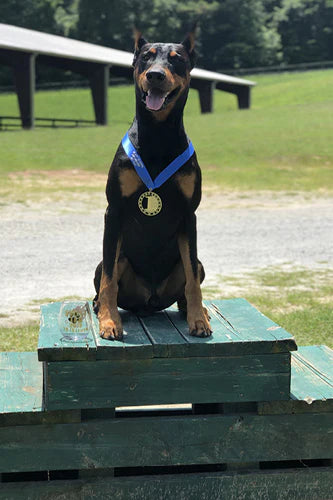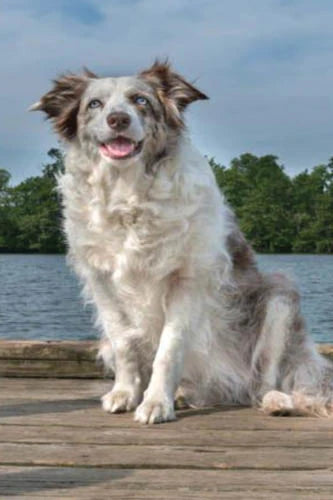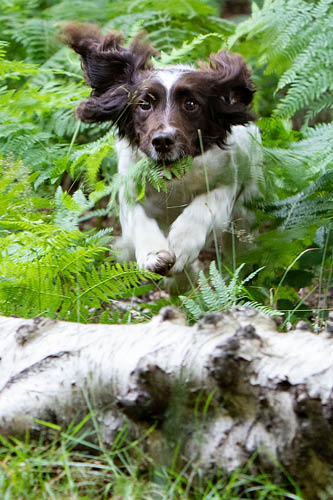Val Rutledge moved from Canada to Florida in the '80s and has been competing with her agility dogs for 24 years.
"I am a veterinary care practitioner—I spend my week doing massage, laser therapy, and myofascial release on clients' dogs. My own get treated too; it has been part of Tide's routine for a long time."
Tide is a 12-year-old Border Collie. He loved to be in the agility ring and was something of a superstar.
"He has been to the USDAA finals every other year, and he competed for nine years with me. About three years ago, he fell down a flight of stairs. He literally somersaulted all the way down. The vets believe that he had a hairline fracture of one of his vertebrae. Now we are seeing some of the effects of that."
 They made the decision to end Tide's agility career. He retired from the ring.
They made the decision to end Tide's agility career. He retired from the ring.
"We saw a noticeable change in him. Not just in his mobility but also in his ability to process things. His brain would do one thing, but his body was a few seconds behind. That was heartbreaking to see. It's hard to retire your dog that's done everything with you for 12 years."

Val is highly qualified to support Tide, and along with monthly visits to a rehabilitation vet, he also gets daily massages, myofascial release, and laser therapy. Despite all of this, he wasn't making any more improvements.
"My husband is skeptical of supplements. He was a research scientist and an anesthesiologist, so he likes to read all the research before trying anything new. He read every single article and research paper on Antinol® and was impressed. He was the one that suggested we try it."
The first 15 days are crucial when starting your pet on their Antinol® journey. You need to give double the maintenance amount of soft gels in that time, but 90% of pet parents will see a difference in 30 days. Tide didn't wait that long!
"After just five days, we noticed that he had an improved ability to get up. He was much faster to get up from resting, and he was using his back leg more. Within a week, he was much better. We live on six acres—he was wandering about, following the pack and trying to do agility. He was so much more active."

After nearly a month, Val has seen a noticeable change in his behavior.
"Mentally, he seems more acute. Even his eyes seem brighter. Now, he takes only half a second to get up! I was watching him today; he was lying in the yard. I called him, and he just popped right up. He pushed off on that back left leg too. So that was pretty nice."
Val has been so impressed with Antinol® that she has recommended it to lots of her agility friends, Including Tide's brother, one of her massage clients.
"My friend was staying with us when we started giving Antinol® to Tide. She couldn't believe the difference in him from when she first arrived to two weeks later. He was brighter, more alert, and just very playful. She has eight dogs, and she plans to start them all on Antinol®.
Now, when Val massages Tide, he seems much more relaxed, with no trigger points in his muscles from compensating for his injury.

"He finally came on a trail walk with us today. That's the first time in a year!"
"He's alert, and he's playing. He's a totally different dog. Antinol® has allowed him to feel better and move better."
Disclaimer: These stories are for informational purposes only. The information is not a substitute for expert veterinary care. Stories are written by the Antinol team based on real interviews conducted with the pet parents and represent their own observations. These observations are not guaranteed, are not medically substantiated, and may not be typical for other pets.









